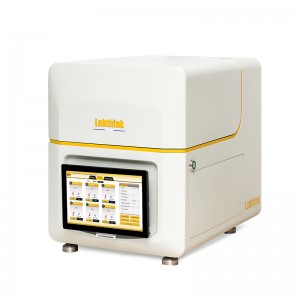How to control the thickness of aluminum foil in aluminum plastic composite packaging for powdered milk without sacrificing oxygen barrier property?
Powdered milk or dried milk is a manufactured dairy product made by evaporating milk to dryness. One purpose of drying milk is to preserve it; milk powder has a far longer shelf life than liquid milk and does not need to be refrigerated, due to its low moisture content.
In order to guarantee the quality of the milk powder within its shelf life, the barrier property (including oxygen barrier property and water vapor barrier property) should be considered when selecting packaging materials. The oxygen barrier property of the packaging materials will be studied in this article, which can protect the protein and vitamin contained in the powdered milk from oxidization.
Currently there are mainly three categories of milk powder packages on the market. They are cans, bags and boxes. The cans are usually made of metals, which have the best barrier property among all packaging materials. The boxes are usually made of paper board, which have the worst barrier property. Plastic composite materials are usually used in the bags for mill powder, which will be elaborated in this article.
Aluminum or aluminized composite film, featured with ultra-high barrier property, is widely used as the packaging material for milk powder. The thickness of the aluminum foil in the aluminum plastic composite film determines the oxygen barrier property, to some extent. However, it does not mean the higher the thickness of aluminum foil is, the higher the oxygen barrier property is. Additionally, the manufacturers have to consider the cost of the packaging materials. Therefore, it is necessary to control the thickness of aluminum foil without sacrificing its oxygen barrier property.
This article provides a test method of oxygen barrier property for aluminum plastic films with different thickness aluminum foils for your reference. We tested three types of aluminum plastic composite films. The aluminum foil thickness of those films is different from each other. The testing instrument we used is Labthink’s C206H Oxygen Transmission Rate Tester.
This instrument uses a coulometric detector to determine the oxygen transmission rate. The specimen is mounted as a sealed semi-barrier between two chambers at ambient atmospheric pressure. One chamber is slowly purged by a stream of nitrogen at a given temperature and relative humidity and the other chamber is purged by a stream of oxygen at the same temperature as the nitrogen stream but may have a different relative humidity than the nitrogen stream. In this case the environment would more closely simulate actual shelf conditions. As oxygen gas permeates through the film into the nitrogen carrier gas, it is transported to the coulometric detector where it produces an electrical current, the magnitude of which is proportional to the amount of oxygen flowing into the detector per unit time. Note: For the package specimens, nitrogen flows inside the package while oxygen flow outside the package.

Figure 2.C206H Oxygen Transmission Rate Tester
The tests can be performed according to the following procedures.
Condition the test samples as required and then place the samples in desiccant container for 48 hours. Cut 3 pieces of specimens from the samples. The size of the specimen should be 108 × 108 mm.
The thickness of aluminum foil of the three types of specimens is 7 µm, 9 µm and 12 µm, respectively.
Apply a thin layer of vacuum grease on the edge of the test cell and then mount the test specimen on it. The specimen should be free of creases. Press the specimen gently so that the specimen can contact with vacuum grease properly. Then close the test cell tightly.
a. Apply Vacuum Grease
b. Mount specimen and close the test cell
How to mount the specimen
Add distilled water so that the humidity of oxygen and nitrogen can meet the requirements. Turn on the gas supply. Adjust the pressure of gas supply as required.
Switch on the instrument and run the software.
Set test temperature and other test parameters. Then start the test.
The test results will be calculated and displayed automatically after tests.
The test results for the three types of specimens are 0.5014 cm3/m2·24h, 0.1927 cm3/m2·24h and 0.3011 cm3/m2·24h, respectively. The specimen with 9µm thick aluminum foil has the best oxygen barrier property.
For more details about C206H Oxygen Transmission Rate Tester, please visit www.labthink.com
About Labthink Instruments Co., Ltd:
Labthink Instruments Co., Ltd is one leading supplier of packaging testing instruments, which is headquartered in Jinan, China and operated in Boston, U.S.A.


